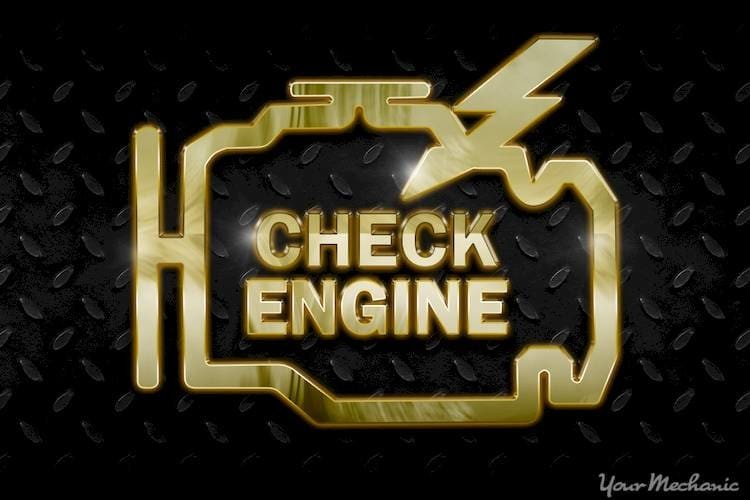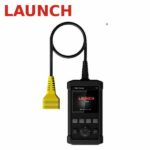 Check Engine Light
Check Engine Light
Encountering a P0091 trouble code can be concerning for any vehicle owner. This OBDII code signals a problem within your car’s fuel system, specifically related to the Fuel Pressure Regulator Control Circuit Low. But what does this mean for your vehicle, and how can you address it? As an auto repair expert at autelfrance.com, I’m here to break down the P0091 code, helping you understand its causes, symptoms, and the steps needed to get your car running smoothly again.
Decoding the Causes of P0091
The P0091 code indicates that your vehicle’s Powertrain Control Module (PCM) has detected an issue with the fuel pressure. Specifically, it’s registering a “low” voltage in the control circuit for the fuel pressure regulator 1. This doesn’t necessarily mean the fuel pressure regulator itself is faulty, but rather there’s a problem within the electrical circuit that controls it. Several potential issues can trigger this code:
- Faulty Fuel Pump: A failing fuel pump might not be delivering adequate fuel pressure, leading to the low circuit reading.
- Faulty Fuel Pump Relay: The relay that powers the fuel pump could be malfunctioning, causing inconsistent or insufficient power delivery.
- Faulty PCM: In rare cases, the PCM itself could be the source of the problem, misinterpreting signals or sending incorrect commands.
- Faulty Electric Fuel Pressure Regulator: While not always the direct culprit, a failing fuel pressure regulator can indeed cause circuit issues.
- Restriction in the Fuel Filter or Fuel System: A clogged fuel filter or blockage in fuel lines can restrict fuel flow, impacting pressure and potentially triggering the P0091 code.
- Damaged Wiring (Short to Ground): Damaged, corroded, or shorted wiring in the fuel pressure regulator control circuit is a common cause of P0091. A short to ground can pull the voltage low, triggering the code.
- Low Fuel Tank Level: Believe it or not, running consistently low on fuel can sometimes contribute to fuel system issues and potentially trigger this code, though it’s less common.
Recognizing the Symptoms of P0091
When the P0091 code is present, you may observe several symptoms affecting your vehicle’s performance. These symptoms can range in severity, but it’s crucial to address them promptly:
- No Start or Rough Start Condition: Insufficient fuel pressure makes it difficult for the engine to start. You might experience extended cranking times or the engine failing to start altogether.
- Stalling During Acceleration: If the engine isn’t receiving enough fuel, it can stall, particularly when you demand more power by accelerating.
- Lack of Power: Reduced fuel pressure translates to less fuel for combustion, leading to a noticeable decrease in engine power and performance.
- Poor Fuel Economy: An inefficient fuel system due to pressure issues can result in your vehicle consuming more fuel than usual.
In some instances, you might find that the engine starts, but it requires prolonged cranking. It’s also important to note that P0091 often appears alongside other diagnostic trouble codes, providing a more complete picture of the underlying issues.
Diagnosing P0091: A Mechanic’s Approach
A systematic diagnostic approach is essential for accurately pinpointing the root cause of the P0091 code. A mechanic will typically begin with a thorough visual inspection of the fuel system components, including:
- Fuel Tank: Checking for damage or contamination.
- Fuel Pump: Listening for proper operation and inspecting for leaks.
- Fuel Filter: Examining for clogs or damage.
- Fuel Lines and Hoses: Looking for leaks, kinks, or damage.
- Electrical Wiring and Connectors: Inspecting for corrosion, damage, and proper connections related to the fuel pump and fuel pressure regulator circuits.
- Sensors and Injectors: Checking for obvious damage or leaks.
This visual inspection helps identify any readily apparent issues that can be addressed immediately. Following the visual check, a crucial step is performing a fuel pressure test. This test measures the actual fuel pressure in the system, verifying if it meets the manufacturer’s specifications. This test can help determine if the fuel pump, fuel pressure regulator, or a restriction is the primary problem.
Common Diagnostic Pitfalls
A frequent mistake when diagnosing P0091 is jumping to conclusions and replacing parts like the fuel pressure regulator or fuel pump without proper verification. It’s critical to remember that a trouble code is merely an indicator of a sensor reading being outside of the expected range. The code itself doesn’t definitively point to a faulty part.
For example, simply because the code mentions “Fuel Pressure Regulator Control Circuit Low” doesn’t automatically mean the regulator is bad. The issue could lie in the wiring leading to the regulator, a faulty relay, or even a PCM problem misinterpreting data. Accurate diagnosis requires a step-by-step approach, using tools and tests to confirm the actual faulty component, rather than solely relying on the code itself.
Severity of the P0091 Code
The P0091 code is considered a serious issue. It directly impacts engine operation and can potentially prevent your vehicle from starting. This situation can be more than just inconvenient; it could leave you stranded and create a safety hazard, especially if the stalling occurs in traffic.
Given the potential for sudden breakdowns and compromised engine performance, it’s highly recommended to address a P0091 code promptly. Early diagnosis and repair can prevent more significant problems and ensure your vehicle remains reliable and safe to drive.
Potential Repairs for the P0091 Code
The repairs needed to resolve a P0091 code will depend entirely on the underlying cause identified during the diagnostic process. Some common repairs include:
- Fuel Pump Replacement: If the fuel pump is failing to deliver adequate pressure, replacement is necessary.
- Fuel Pump Relay Replacement: A faulty fuel pump relay is a relatively simple and inexpensive fix.
- Fuel Pressure Regulator Replacement: If the regulator itself is faulty, replacing it will restore proper fuel pressure control.
- Wiring Repair: Addressing damaged, shorted, or corroded wiring in the fuel pressure regulator circuit is often required. This might involve repairing wires, replacing connectors, or fixing shorts to ground.
- Fuel Filter Replacement: Replacing a clogged fuel filter can resolve fuel restriction issues.
- PCM Replacement (Rare): In very rare cases, if the PCM is determined to be faulty, it may need replacement and reprogramming.
Important Considerations Regarding P0091
When diagnosing P0091, always consider any other trouble codes that are present. The P0091 code’s meaning can be influenced by accompanying codes. For instance, codes related to lean fuel conditions or other fuel system components can provide valuable clues and help narrow down the diagnosis. A comprehensive approach that takes all diagnostic information into account is crucial for effective repair.
Need professional help with a P0091 code? Don’t hesitate to seek expert assistance. YourMechanic offers certified mobile mechanics who can come directly to your location to diagnose and repair your vehicle. Get a quote and book an appointment online or contact a service advisor at 1-800-701-6230.

